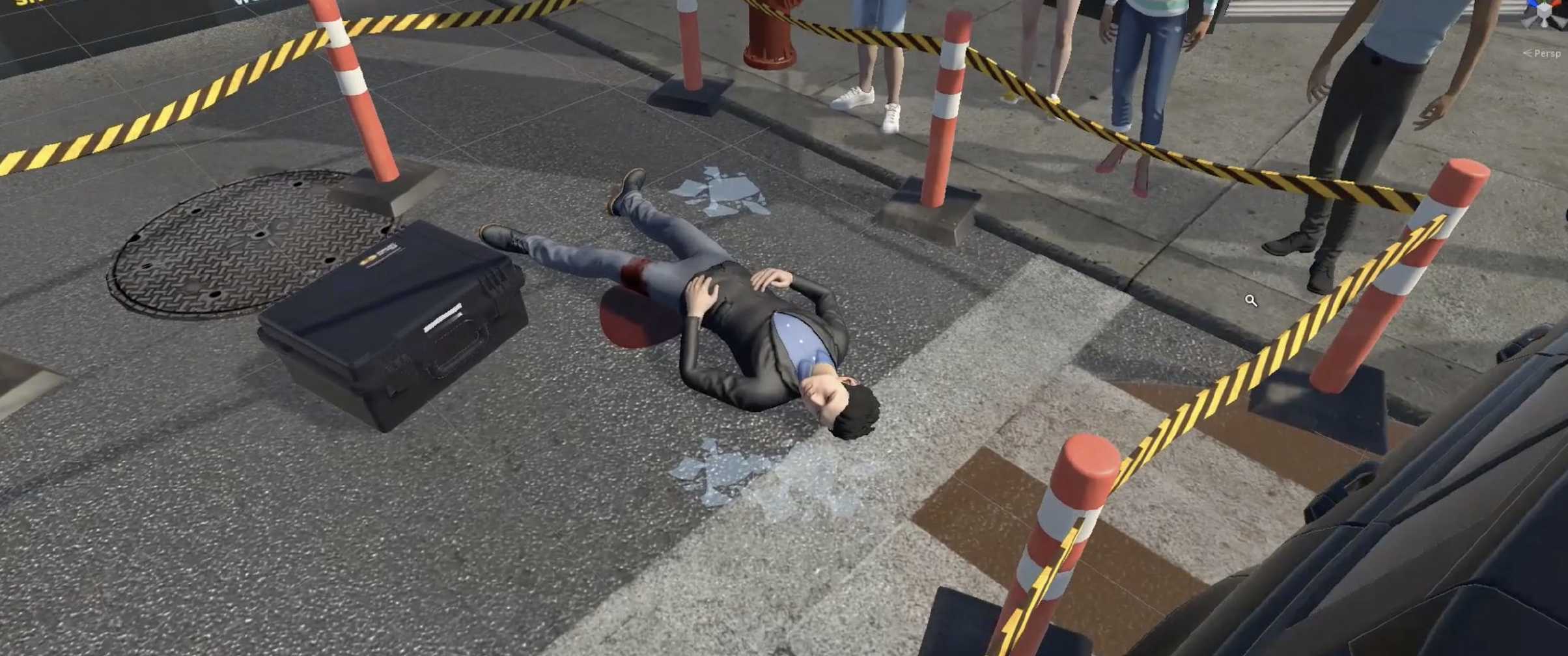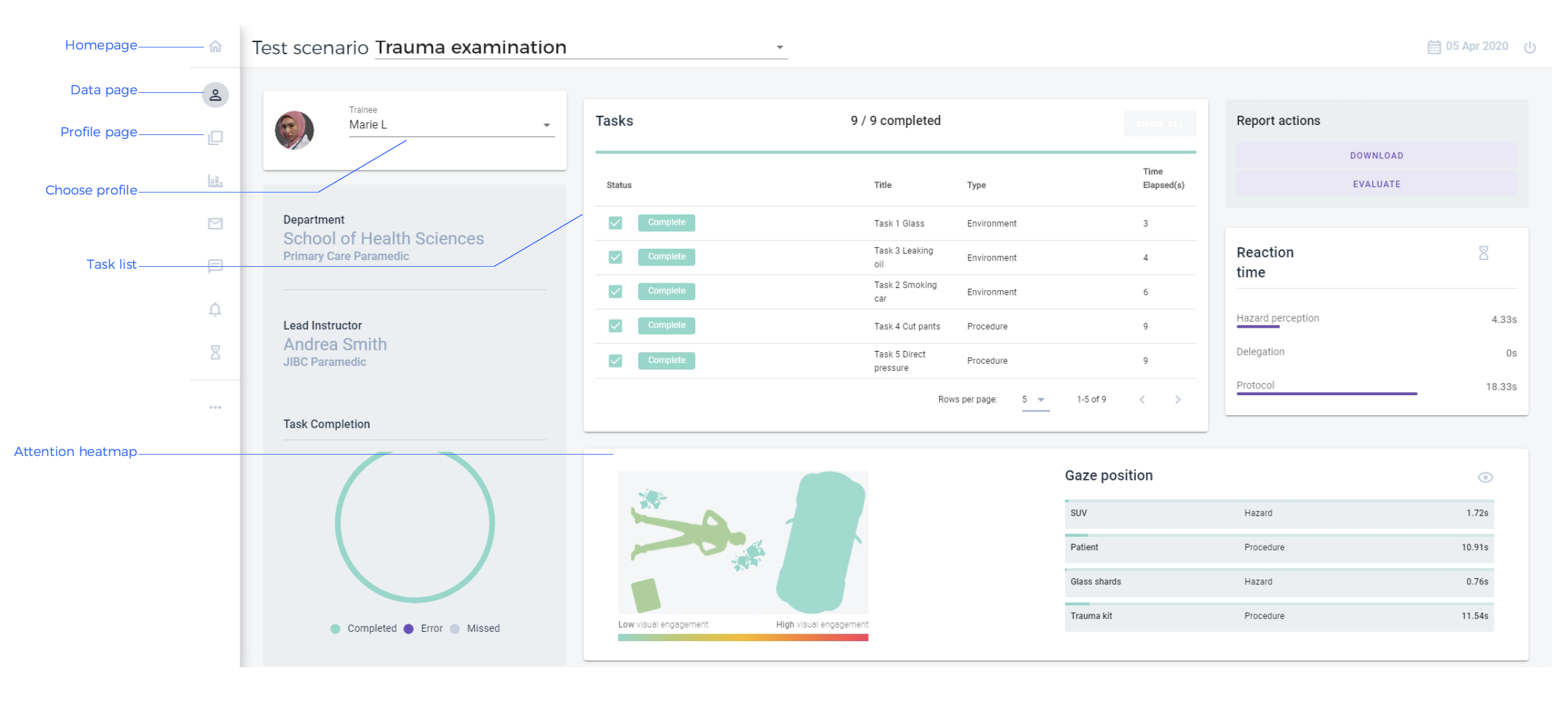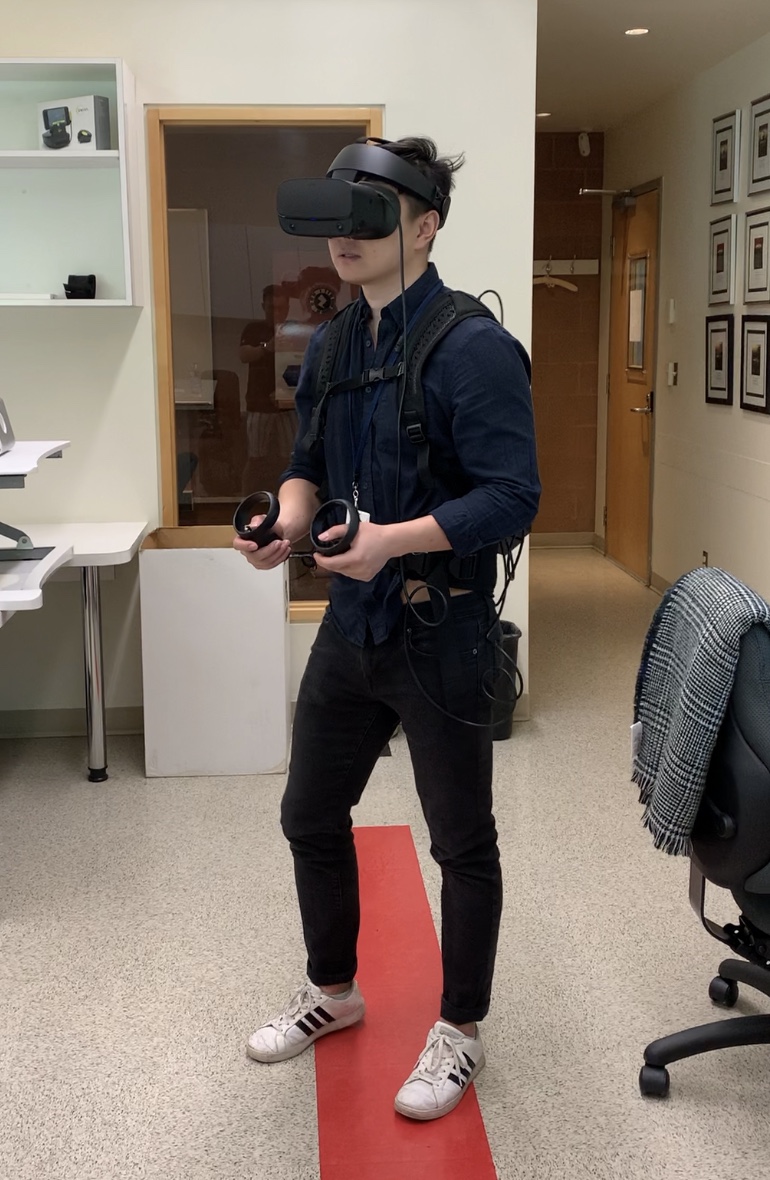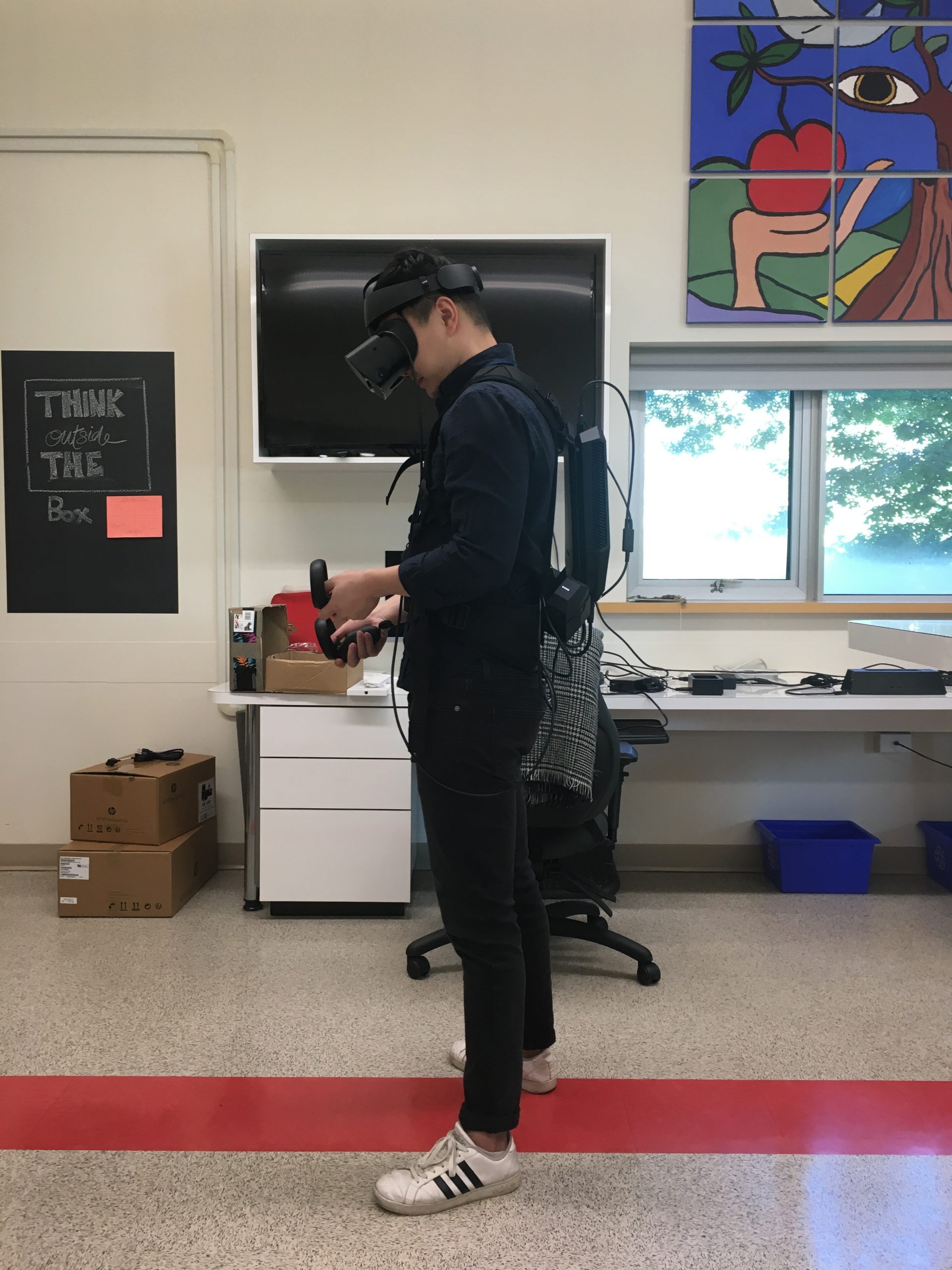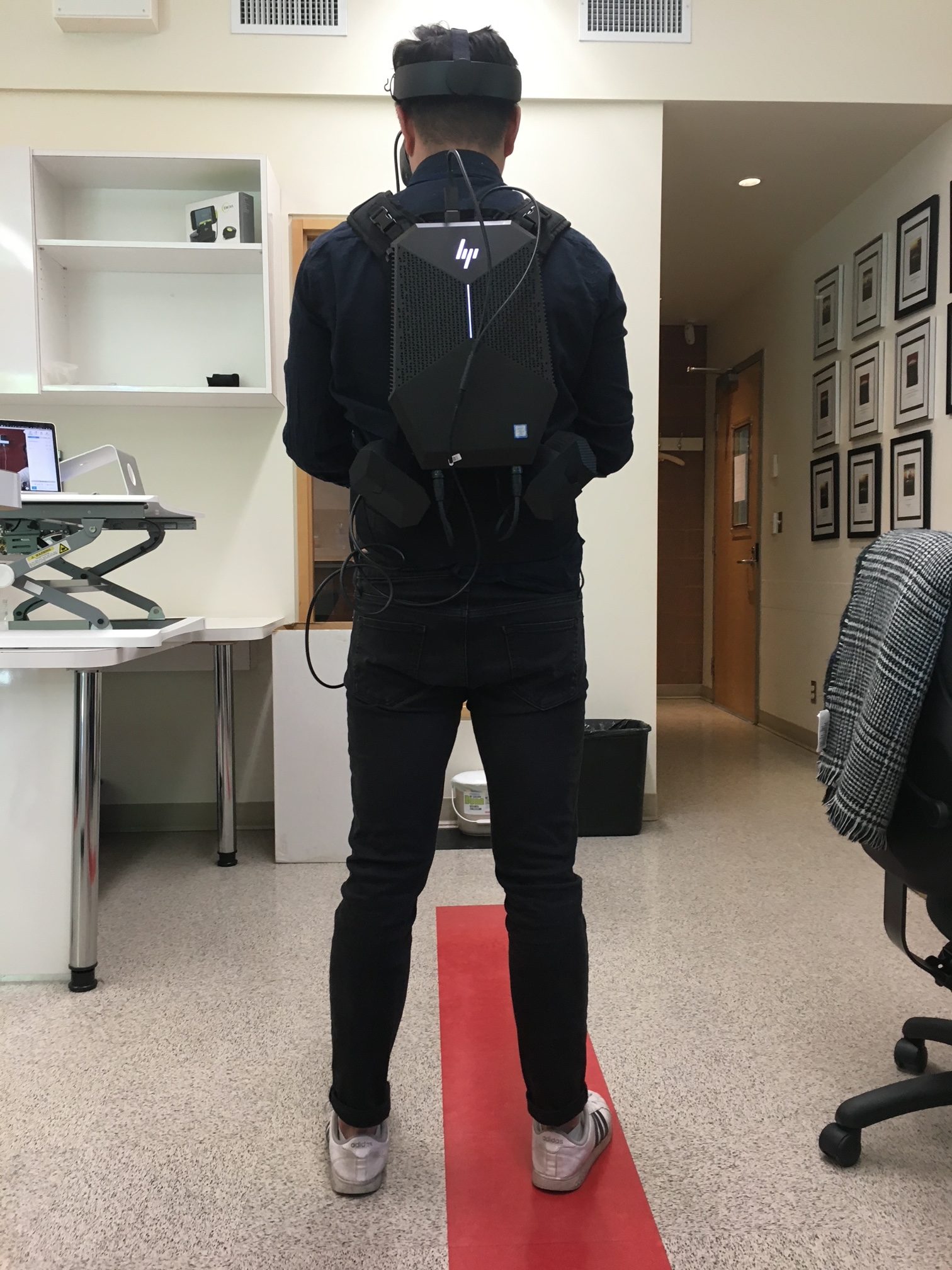Virtual reality (VR) or immersive VR simulations for learning is no longer something to be imagined or planned in the future. If you have not done a project like this yet, the best time to start is now.
About two years ago, I had the chance to present “Virtual Reality for Public Safety Training” at JIBC Open Symposium. After introducing relevant pedagogical significance, examples, research on effectiveness, and future opportunities, I landed on a question for the audience, “What would be the problem you want to solve with emerging technology like VR?”
The responses were fueled with enthusiasm and revealed a wide range of applications and practices that JIBC could benefit from. Just to name a few:
- “simulate a patrolling scenario in downtown eastside”
- “access correction centers and walk around the buildings”
- “build empathy by living and acting like someone else”
As we can see, common to these scenarios are things that we feel difficult to design or simulate effectively in the classroom. Bailenson (2019) pointed out that high-fidelity 3D environments like virtual reality have the capability to simulate scenarios that are:
- Impossible: you cannot change skin colour easily, but in VR you can inhabit avatars with different skin colours with profound results.
- Expensive: you cannot easily fly your whole school to Machu Picchu.
- Dangerous: you would not want to want to train emergency landings by crashing real airplanes.
- Counterproductive: you should not cut down an entire forest to instruct on the problems of deforestation.
The primary differentiator for high-fidelity immersive simulation technologies is that it creates a strong sense of presence and enables embodiment.
- The concept of Presence has a long history in psychology, Witmer and Singer (1998) defined it as “the subjective experience of being in one place or environment even when physically situated in another”.
- Embodiment, on the other hand, means “our process of learning and understanding are shaped by the actions by our body, such as gestures”. (Johnson-Glenberg, 2018)
While presence manipulates or alters how our brains perceive the world around us, embodiment allows us to physically rewire our learning from a behavioural level. Scholars suggest that well-designed 3D simulations address some critical pieces in learning from a pedagogical perspective. Dalgarno and Lee (2010) listed five major affordances of 3D virtual learning environments:
- Spatial knowledge representation: facilitate learning tasks that lead to the development of enhanced spatial knowledge representation of the explored domain.
- Experiential learning: facilitate experiential learning tasks that would be impractical or impossible to undertake in the real world
- Motivation and engagement: facilitate learning tasks that lead to increased intrinsic motivation and engagement
- Improved transfer of knowledge and skills: facilitate learning tasks that lead to improved transfer of knowledge and skills to real situations through the contextualization of learning.
- Collaborative learning: facilitate tasks that lead to richer and/or more effective collaborative learning than is possible with 2‐D alternatives.
Learning these theories provided us with a foundation of how we may move forward with high-fidelity simulations. But designing and customizing simulations for specialized areas in public safety remains a challenge as it requires a wide range of expertise such as content knowledge, programming, 2D/3D modelling, animation, user experience design, and user interface design. A collaborative, interdisciplinary team is the key to the development of accessible and usable immersive virtual learning environments.
Fortunately, over the last two years, we were able to identify some internal partners at JIBC who are interested in developing simulations, and also had the opportunity to collaborate with a few highly skilled teams from the Centre for Digital Media.
Here are some video demonstrations for these award-winning projects:
Produced by LifesaVR team at the Centre for Digital Media
Produced by FlashoVR team at the Centre for Digital Media
https://youtu.be/_DvdOPLUGLg
Produced by Team Caramel at the Centre for Digital Media
Reference
Bailenson, J. (2019). Experience on demand: What virtual reality is, how it works, and what it can do. W. W. Norton & Company.
Dalgarno, B., & Lee, M. J. (2010). What are the learning affordances of 3‐D virtual environments?. British Journal of Educational Technology, 41(1) https://onlinelibrary.wiley.com/doi/full/10.1111/j.1467-8535.2009.01038.x
Johnson Glenberg, M. (2018). Immersive VR and Education: Embodied Design Principles that Include Gesture and Hand Controls. Frontiers in Robotics and AI, 81. https://www.frontiersin.org/articles/10.3389/frobt.2018.00081/full
Witmer, B. G., & Singer, M. J. (1998). Measuring presence in virtual environments: A presence questionnaire. Presence, 7(3), 225-240.
